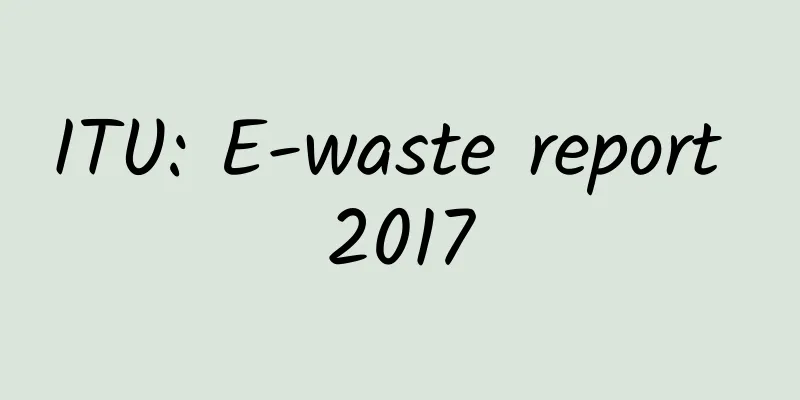ITU: E-waste report 2017

|
199IT original compilation The ITU released the "2017 E-waste Report", which showed that a total of 4,470 tons of e-waste was generated worldwide in 2016, which is equivalent to 4,500 Eiffel Towers. The amount of electronic waste is increasing worldwide, which poses a significant risk to the environment and human health through open burning, improper dumping and unsafe disposal practices. It also poses several challenges to sustainable development. The growth of e-waste is driven by the increasingly short application and replacement cycles of information and communication technologies. The information society is accelerating, characterized by an increasing number of users. Currently, only half of the world's population uses the Internet, many people have more than one device, and the replacement cycle of mobile phones, computers and other devices is getting shorter and shorter. Disposable income is growing in many developing countries, and the consumption of electronic products by the middle class is generating more e-waste. The amount of e-waste generated will increase significantly in the coming decades. In 2016, 6.1 kg of e-waste was generated every hour worldwide, compared to 5.8 kg/hour in 2014. It is estimated that by 2021, the total amount of e-waste worldwide will increase to 52.2 million tons, close to 6.8 tons/hour. Data shows that 8.9 million tons of electronic waste were recycled, equivalent to 20% of the total. Asia is the region that generates the most e-waste. In 2016, Asia generated 18.2 million tons of e-waste, followed by Europe (12.3 million tons), Americas (11.3 million tons), Africa (2.2 million tons) and Oceania (0.7 million tons). However, Oceania ranks first in terms of per capita e-waste production. Europe has the highest e-waste collection rate (35%). Only 41 countries in the world have official e-waste statistics. In countries without specific laws, e-waste is likely to be treated as general waste, which has a very high risk of being mishandled and releasing toxins. The good news is that 66% of the world's population lives in countries with e-waste management laws, a significant increase from 44% in 2014. In fact, e-waste is not worthless waste. In 2016, e-waste generated contained 55 billion euros worth of recyclable raw materials. The PDF version will be shared to the 199IT exchange group. 199IT thanks you for your support! |
>>: eMarketer: Second screen usage growth in 2018 mainly comes from smartphones
Recommend
How long does pregnancy breast pain last?
Creating a little life is a very difficult proces...
What is the armpit temperature after ovulation?
Adult women need to experience an ovulation perio...
What are the clinical manifestations of cervicitis?
Female friends should all know that the cervix is...
The reason why women have flat breasts
Many women want to have a perfect body. The perfe...
Canalys: Global wearable wristband shipments will grow 5% in 2024
According to the latest analysis by Canalys, ship...
What are the health tips during pregnancy?
Women should protect themselves well during pregn...
Night Listening | These four things will make your bones brittle, so avoid doing them!
"Osteoporosis" can have many impacts on...
How to choose kidney-tonifying tea for women
Tea is a health drink chosen by many people nowad...
I took birth control pills once during breastfeeding
Nowadays, many couples hope to have more space fo...
Lower abdominal pain the day after ovulation
In order to get pregnant more easily, more and mo...
Why do fried dough sticks become hard when they are cold? Are fried dough sticks acidic or alkaline?
Youtiao is made of flour, yeast, edible alkali an...
There are several reasons for cervical pain
In our daily life, many female friends feel very ...
Why does milk overflow when there is not much milk?
Even if there is not much milk, symptoms of milk ...
Can pregnant women eat Yanghe?
Have you heard of Yanghe? It is a wild plant with...









